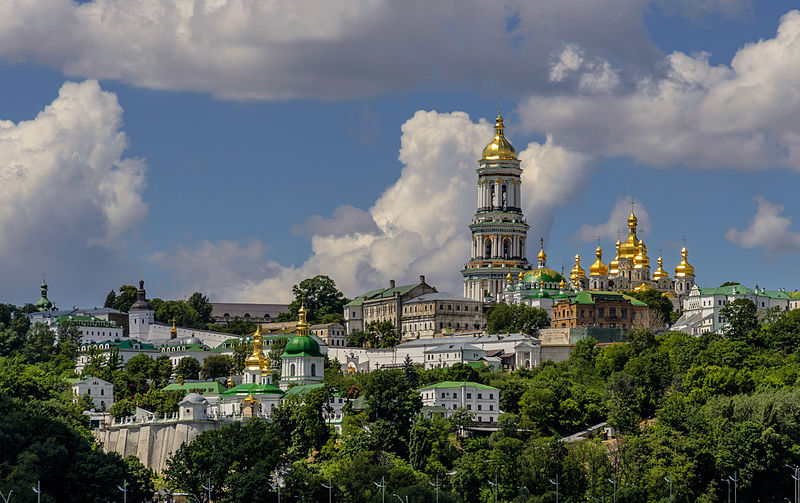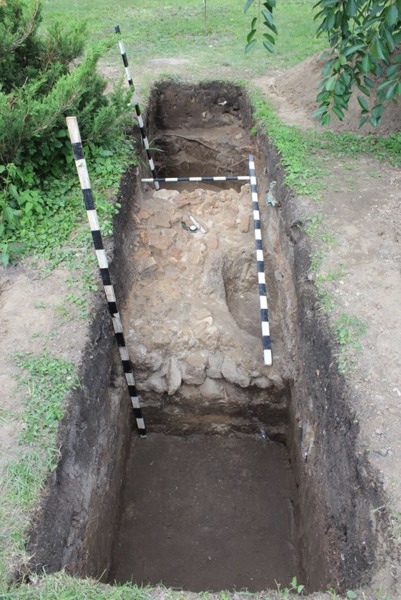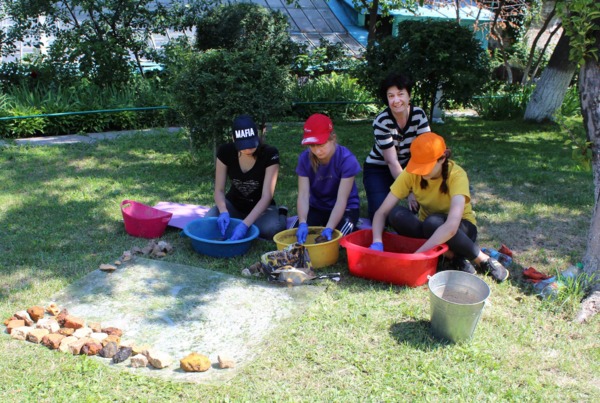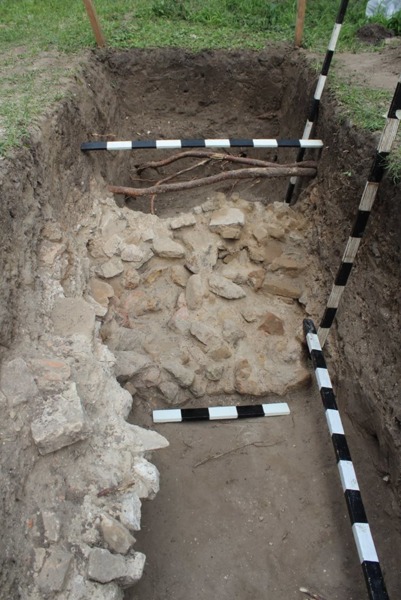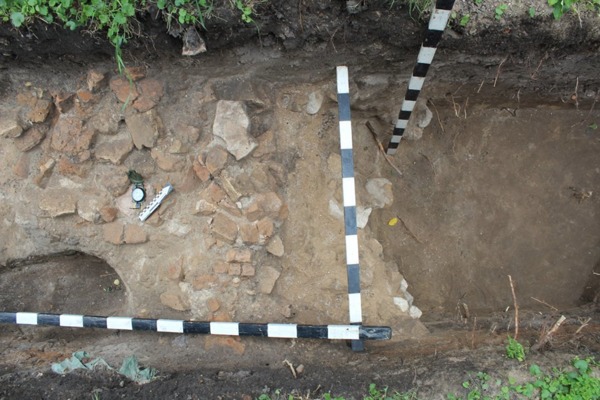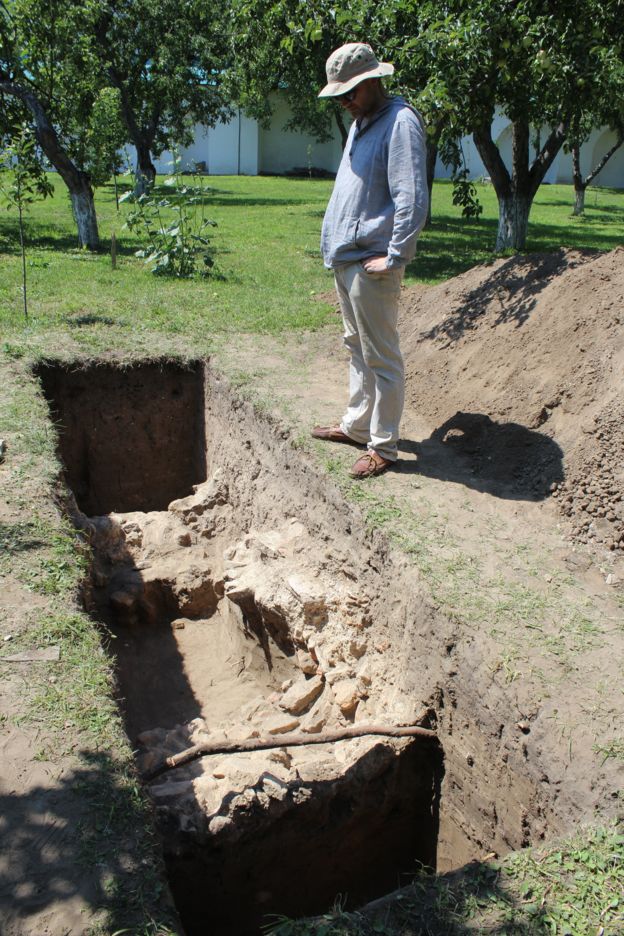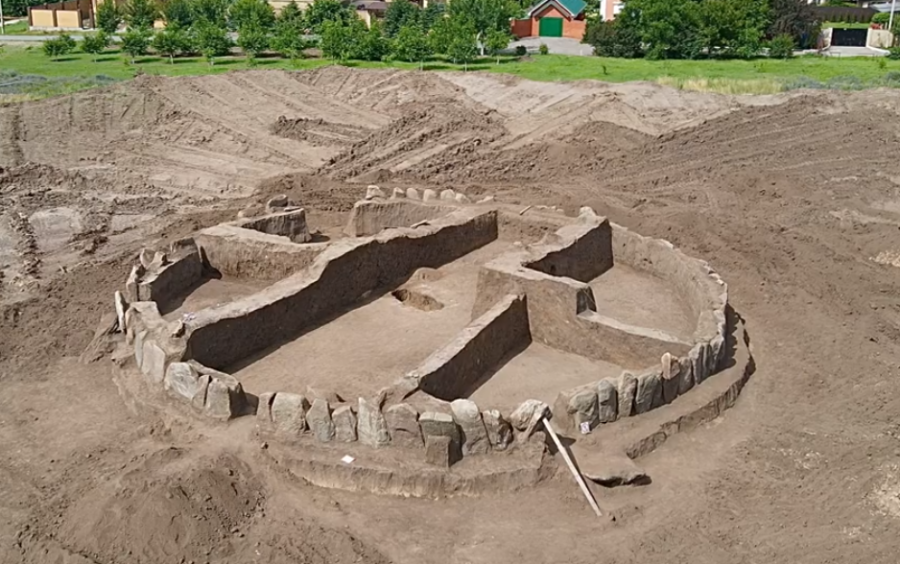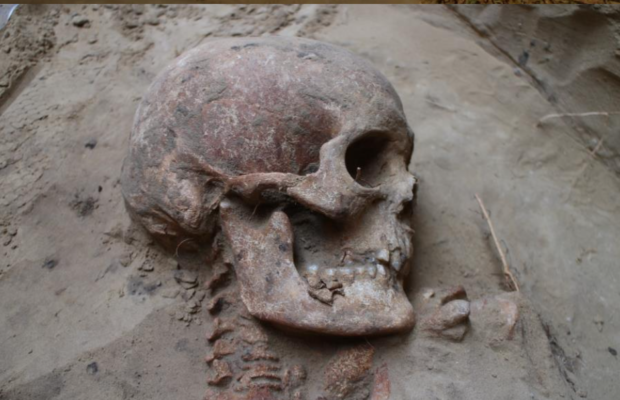
Serhii Taranenko, Head of the Scientific and Research Department of Archaeology at the Kyiv-Pechersk Preserve, told BBC Ukraine about the find.
According to archaeologists, the foundation and walls consist of boulders, small rubbles of sledged stones, and chippings of the Old-Rus bricks, known as plinthites.
At the excavation site, a piece of an Old-Rus bracelet with a braided ornament was also found.

The dig was conducted near the Gate Church of the Trinity in the Metropolitan Garden of the Lavra.
The archaeologists have discovered that the wall is 21 meters long. The scientists have unearthed only fragments of foundations as of now, scheduling the full excavation for the next year.

“Among the plans we have is creating of the display, which will include the remains of the fortification walls. Maybe we with an information center,” told Mr. Taranenko.
According to Taranenko, the find was a part of the wall which enclosed the Upper Lavra. This fortification was built at the end of the 12th century and it stood for about 150 years, up to the Mongol-Tatar invasion of Rus and the fall of Kyiv in 1240.
Read also: The life and death of people in medieval Ukraine, told by a paleoanthropologist

It was built in place of a wooden fence, so-called stovpya. After the Mongol-Tatar incursion in the 13th century, the next stone wall around the Lavra emerged only at the end of the 17th century, funded by Hetman Ivan Mazepa.
Read more:
- 900-year-old relic found under church floor in Busk, Lviv Oblast
- Archaeologists discover Scythian treasure in Poltava Oblast
- Historical finds from Kyivan Rus era under threat in center of Kyiv
- Activists fight back against decision of Kyiv authorities to build shopping mall on Kyivan Rus archaeology site
- The life and death of people in medieval Ukraine, told by a paleoanthropologist
- Egyptian mummies found in Kyiv Cathedral
- How Moscow hijacked the history of Kyivan Rus
- Anna of Kyiv, the French Queen from Kyivan Rus
- Princess Olha of Kyiv: a golden page in Ukrainian history
- Putin’s ‘appropriation’ of medieval Ukrainian princess reflects more than historical arrogance
- Stolen ancient viking’s sword from the dawn of Kyivan Rus comes back home to Ukraine
- Ukrainian conflict is between ‘heirs of Kyivan Rus’ and ‘heirs of Golden Horde’
- History as a weapon in Russia’s war on Ukraine
- A different Rus: Why the Kremlin hates Ukrainian statehood
- The Crimean Tatar Palace and other historic sites Russia is destroying in occupied Crimea
- Ukrainian neck ornaments: history and symbols
- Ukrainian parliament mulls requiring officials to call the Russian state ‘Muscovy’
- Tatar historian: ‘Russians are no more European than are the Tatars’




